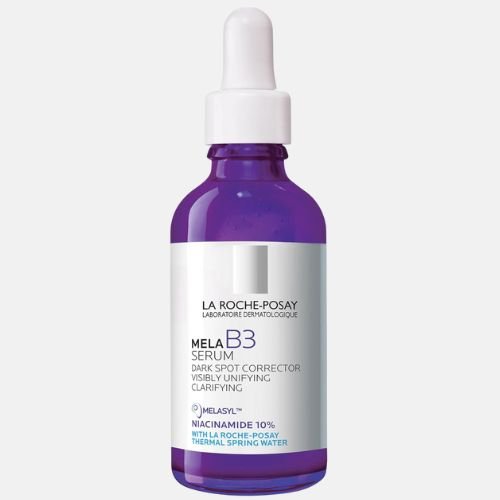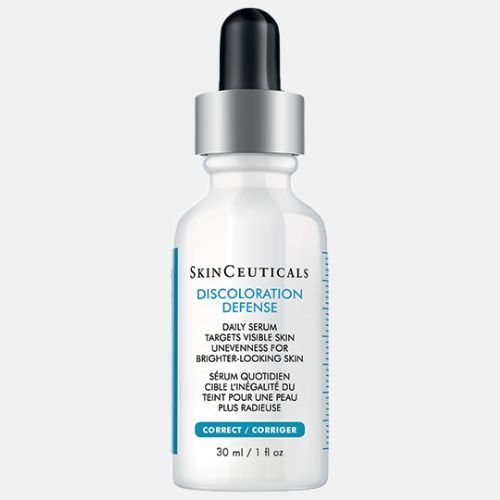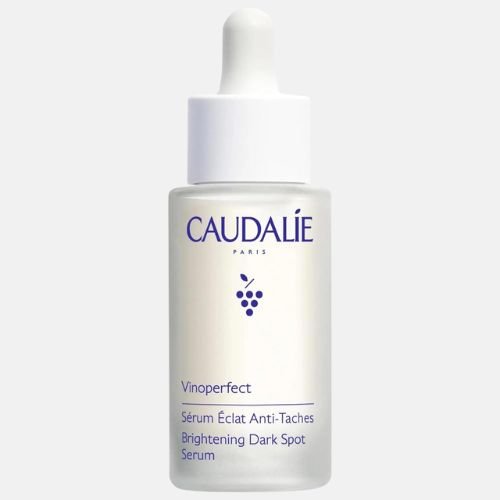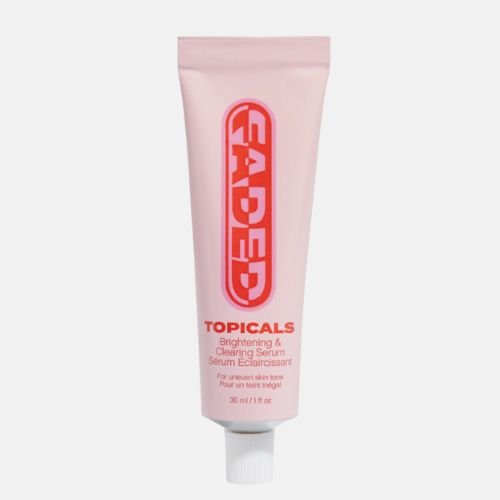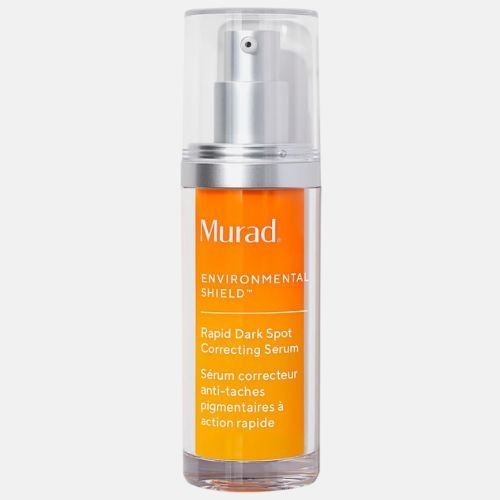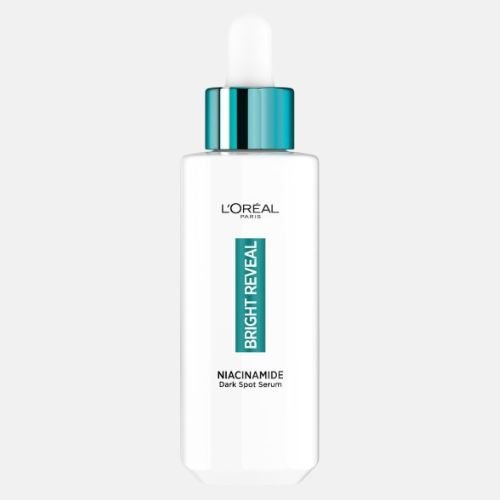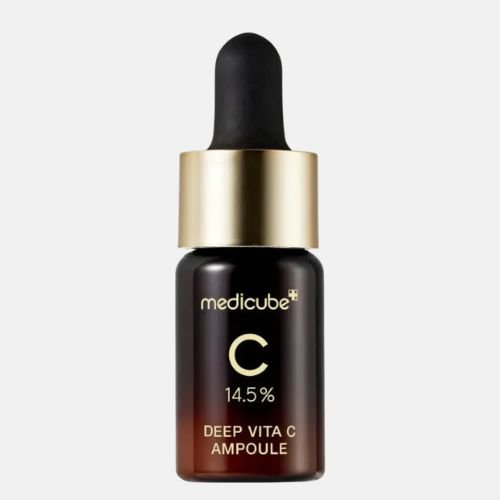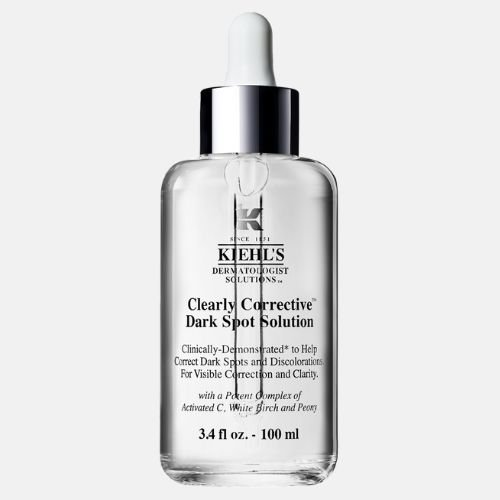The 10 Best Dark Spot Serums For Acne Scars of 2025
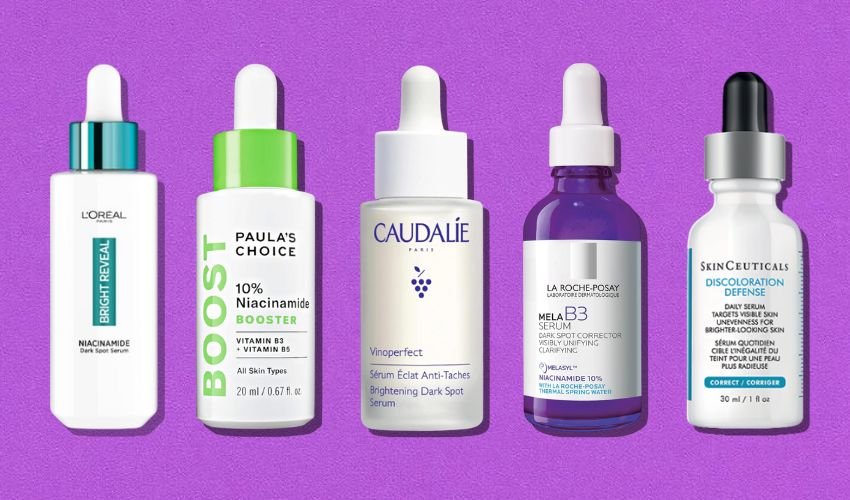
Let’s be real for a second, acne is rude enough on its own. The spots it leaves behind, those flat brown or purplish marks that linger for months, feel like the after-party that never ends. That is where dark spot serums come in. The right formula can help fade post-acne marks, even out tone, and give your skin that “oh, you sleep eight hours” glow, even when you don’t.
Dark spot serums are loaded with brightening and smoothing ingredients like niacinamide, vitamin C, azelaic acid, tranexamic acid, and more. They work on post-inflammatory hyperpigmentation (PIH), old acne scars, sun spots, and general dullness, and you do not need a dermatologist’s budget to get started. Many of the best options now live at regular beauty stores and drugstores, sitting right next to your usual cleanser. Below, ten tried-and-loved dark spot serums that are especially good for acne scars, plus how they feel and who they are best for.
Best Picks
1. La Roche-Posay Mela B3 Dark Spot Serum
Mela B3 is the new pharmacy star that derms keep shouting out. It uses a multi-patented ingredient called Melasyl plus 10 percent niacinamide to tackle a wide range of discoloration, including post-acne marks and sun spots. The brand spent 18 years researching the Melasyl molecule, and clinical tests show visible dark spot reduction across different skin tones.
On the skin, it feels like a silky serum primer hybrid, slightly cushy but not heavy. If you are nervous about strong acids on sensitive, acne-prone skin, Mela B3 is a nice “sciencey but gentle” option. Used once or twice a day under moisturizer and SPF, it softens the outline of old acne marks and helps keep new post-pimple spots from getting as dark in the first place. It is also easy to find at many drugstores, which makes sticking with it a lot less painful.
2. SkinCeuticals Discoloration Defense
If you want a serious, derm-style serum and you are okay with a splurge, this is the one everyone brings up. SkinCeuticals Discoloration Defense is built around 3 percent tranexamic acid, 1 percent kojic acid, 5 percent niacinamide, and a buffering ingredient called HEPES. Together they target stubborn brown patches, post-acne marks, and uneven tone across many skin tones. It is a thin, layerable serum that sinks in fast, so it plays nicely under moisturizer and sunscreen.
In real life, this feels like a “slow but steady” friend. You do not wake up glassy overnight, but after about two to four weeks of daily use, old spots look softer and new marks do not hang around as long. The texture is great if you are oily or combo because it is not greasy, and it is easy to keep using it every day, which is the whole point. If your acne scars are deep and stubborn and you want something clinic-level you can still buy yourself, this fits that lane.
3. Caudalie Vinoperfect Radiance Dark Spot Serum
If your skin hates classic high-strength vitamin C, Caudalie Vinoperfect is the “vitamin C alternative” people rave about. It uses a grapevine extract called viniferine, which Caudalie claims can be much more effective than vitamin C at targeting dark spots, plus olive squalane for a soft, hydrating glide. It is designed to work on sun spots, pregnancy mask, and, yes, acne marks, and is suitable for sensitive skin.
On the face, this feels very “French pharmacy chic”. Light, milky, and comfortable enough to use morning and night. Over a bottle or so (around eight weeks), post-acne marks fade and your skin tone looks more even, not bleached. If you like a more natural-leaning formula and your skin loves squalane, this is that calm, glowy serum you reach for on autopilot.
4. Topicals Faded Brightening & Clearing Serum
Topicals Faded is that internet-famous tube built specifically for hyperpigmentation and acne scars on deeper and lighter skin tones. Its ingredient list reads like a greatest hits for dark spots: tranexamic acid, niacinamide, azelaic acid, alpha-arbutin, kojic acid, and antioxidant botanicals. It is formulated to be “hyperpigmentation-safe” for melanin-rich skin and to fade post-blemish marks, scars, and blotchy tone.
In use, Faded is a little thicker, almost like a lotion serum with a light scent that some people notice at first. You apply a thin layer a few nights a week and slowly work up as your skin adjusts. The payoff, especially for acne scars on cheeks and jawline, can be big. Red and brown marks soften, and stubborn patches that have been around for months finally start to budge. It is a “do the work” product, not a cute add-on, and it really shines on complexions that tend to mark up from every breakout.
5. Murad Rapid Dark Spot Correcting Serum
Murad’s Rapid Dark Spot Correcting Serum is for people who want action and are okay with a little extra strength. It uses patented resorcinol technology, glycolic acid to exfoliate, and tranexamic acid to correct and help prevent future dark spots. The brand claims visible reduction in dark spots in as little as 14 days for many users.
On the skin it feels like a classic “treatment serum” – slightly active, a bit of a tingle for some, and best saved for nighttime if you are sensitive. If your acne scars are older and more stubborn, or you have a mix of UV spots plus post-acne marks, Murad is like hitting fast-forward. You absolutely need good moisturizer and strict daily sunscreen with this one, but when you pair it with barrier care, it can move the needle quickly.
6. Paula’s Choice 10% Niacinamide Booster
This is not marketed just as a “dark spot serum,” but it is fantastic for post-breakout marks. Paula’s Choice 10% Niacinamide Booster is a lightweight, water-like serum that you can use alone or mixed into your moisturizer. Ten percent niacinamide helps minimize the look of pores, reduce post-breakout marks, and smooth overall texture. It also includes soothing and hydrating ingredients, so it does not feel like a harsh treatment.
In real life, this is the “I can use it every day” kind of serum. If your acne routine already includes actives like benzoyl peroxide or retinoids, this booster fits in as the calming, brightening support act. Over time, you see old red marks fading, new marks not hanging around so long, and the whole face looks more even. Because it is so thin, it works on oilier skin without feeling like one more heavy layer.
7. The Ordinary Azelaic Acid Suspension 10%
Technically, this one is a cream-gel, not a classic drip serum, but it belongs on any dark spot list for acne-prone skin. The Ordinary Azelaic Acid Suspension 10% uses a high concentration of azelaic acid to brighten uneven tone and improve texture, and it is non-comedogenic and suitable for all skin types. Dermatologists regularly recommend azelaic acid for dark spots, rosacea, and post-acne marks, especially on sensitive and melanin-rich skin.
If your skin freaks out with strong vitamin C or glycolic acid, this is a gentler way to fade acne marks. It has a velvet primer feel that sits well under makeup or sunscreen. Used a few nights a week, it can soften both red and brown marks and calm leftover inflammation around old breakouts. It is also very budget friendly, which makes it an easy thing to repurchase and stay consistent with, and consistency is everything when it comes to hyperpigmentation.
8. L’Oréal Paris Bright Reveal Niacinamide Dark Spot Serum
Bright Reveal is the sleeper drugstore hit for dark spots, especially post-acne marks. It uses around 10–12 percent niacinamide plus amino-sulfonic acid and other brightening helpers to target dark spots, sun spots, and post-acne marks. Clinical testing from the brand shows big reductions in dark spots and a bump in overall radiance over several weeks, and it is labeled as non-comedogenic.
On the skin, this feels like a classic featherweight serum. A few drops spread over the whole face and sink in quickly with no greasy residue. If you want something easy to use morning and night, with proven ingredients for acne marks but not a luxury price tag, this makes sense. It also layers well with other actives when you go slow, so you can keep using your acne treatments while you work on the dark spots they left behind.
9. Medicube Deep Vita C Ampoule 2.0
Vitamin C can be tricky when you are acne-prone, but Medicube’s Deep Vita C Ampoule 2.0 is one of the K-beauty options that keeps coming up for hyperpigmentation and even acne scars. It is a set of small ampoules with 14.5 percent water-based vitamin C plus brighteners like alpha-bisabolol. Clinical tests from the brand show reduction in hyperpigmentation, dark spots, and acne scars in as little as seven days for some users.
In real life, the texture is light and slightly “juicy,” like many Korean serums. The fact that it comes in small vials helps keep the vitamin C fresher, which is great if you never finish big bottles. Used regularly, it brightens the whole face and speeds up fading of those flat brown spots left from old breakouts. If you love the idea of vitamin C but want something that feels more gentle and K-beauty style, this is an easy yes.
10. Kiehl’s Clearly Corrective Dark Spot Solution
Kiehl’s Clearly Corrective Dark Spot Solution is a long-running favorite for hyperpigmentation and acne marks. It uses a stabilized vitamin C derivative called Activated C, plus buffered salicylic acid to gently resurface and brighten, and other supportive ingredients. The formula is designed to target visible dark spots and renewal of surface texture over time, and it often shows up in dermatologist and editor roundups as a go-to for oily or acne-prone skin.
On the face it feels watery and light, almost like an essence. Two or three drops cover the whole face without feeling sticky, which makes it easy to layer under moisturizer. Because it has a bit of salicylic acid, it is a good fit if you still get occasional breakouts while also dealing with old marks. Over steady use, it softens both newer and older spots, and gives the skin a more even, “diffused” look in photos.
What’s the difference between acne scars and dark spots?
- Post-inflammatory hyperpigmentation (PIH)
These are flat brown, tan, or purplish marks that show up after a pimple heals. They’re not textured, just discolored. Dark spot serums are made for this. True scars
These are textured changes, like ice-pick scars, boxcar scars, raised bumps, or dents. Serums can soften how they look a bit (by brightening and smoothing), but they will not “fill in” a deep scar. That usually needs in-office treatments like microneedling, lasers, or TCA Cross.
If your marks are mostly flat and just darker than your normal skin, dark spot serums are exactly the right category. If you can feel dents or raised bumps, you can still use them, but set expectations: tone will improve, texture probably needs professional help.
How long do dark spot serums take to fade acne marks?
First changes: 3–4 weeks of consistent use
Noticeable fading: 6–12 weeks
Stubborn marks: sometimes 3–6 months
Why so long? Post-acne marks live in the deeper layers of the skin. Your skin needs multiple “renewal cycles” to push that pigment up and out while the serum slowly nudges melanin production to chill out. This is why daily sunscreen is non-negotiable. Without SPF, you are fading and re-darkening the same marks at the same time, and it feels like nothing is working.
Take a selfie in the same lighting once a month. Your eyes get used to your face; pictures make progress obvious.
Which ingredients should I look for in a dark spot serum for acne scars?
Most good dark spot serums use a team of brighteners instead of one solo star. Great acne-mark-friendly ingredients include:
Niacinamide – barrier support, brightening, helps with redness and post-blemish marks
Tranexamic acid – works on stubborn dark spots and melasma-type pigment
Azelaic acid – calms redness, helps post-acne marks, often well tolerated on sensitive and deeper skin tones
Vitamin C (L-ascorbic acid or stable derivatives) – brightens, supports collagen, targets uneven tone
Alpha-arbutin, kojic acid, licorice extract – gentle pigment modulators when used in balanced formulas
Glycolic / lactic acid (in low, buffered amounts) – speeds up surface turnover so spots lift faster
You don’t need all of these in one formula. Choose based on your skin’s personality: sensitive skin usually does best with niacinamide, azelaic acid, and tranexamic acid; oilier, more resilient skin can handle vitamin C and mild acids more often.
Can I use dark spot serums if I still have active acne?
Yes, and in many cases, you should, as long as you are thoughtful about layering. A few tips:
Choose non-comedogenic, lightweight serums that say they’re okay for acne-prone or oily skin.
Avoid stacking a strong dark spot serum plus strong acne actives (benzoyl peroxide, high-strength retinoids, harsh acids) on the same night at full intensity when you’re just starting.
A simple pattern that works for a lot of people:
Night A: acne treatment (like benzoyl peroxide or retinoid)
Night B: dark spot serum + plenty of moisturizer
Night C: just cleanser + moisturizer (rest night)
Then repeat
The idea: treat the active breakouts and the leftover marks, but give your barrier room to breathe. If everything is stinging, it’s a sign to slow down, not push harder.
